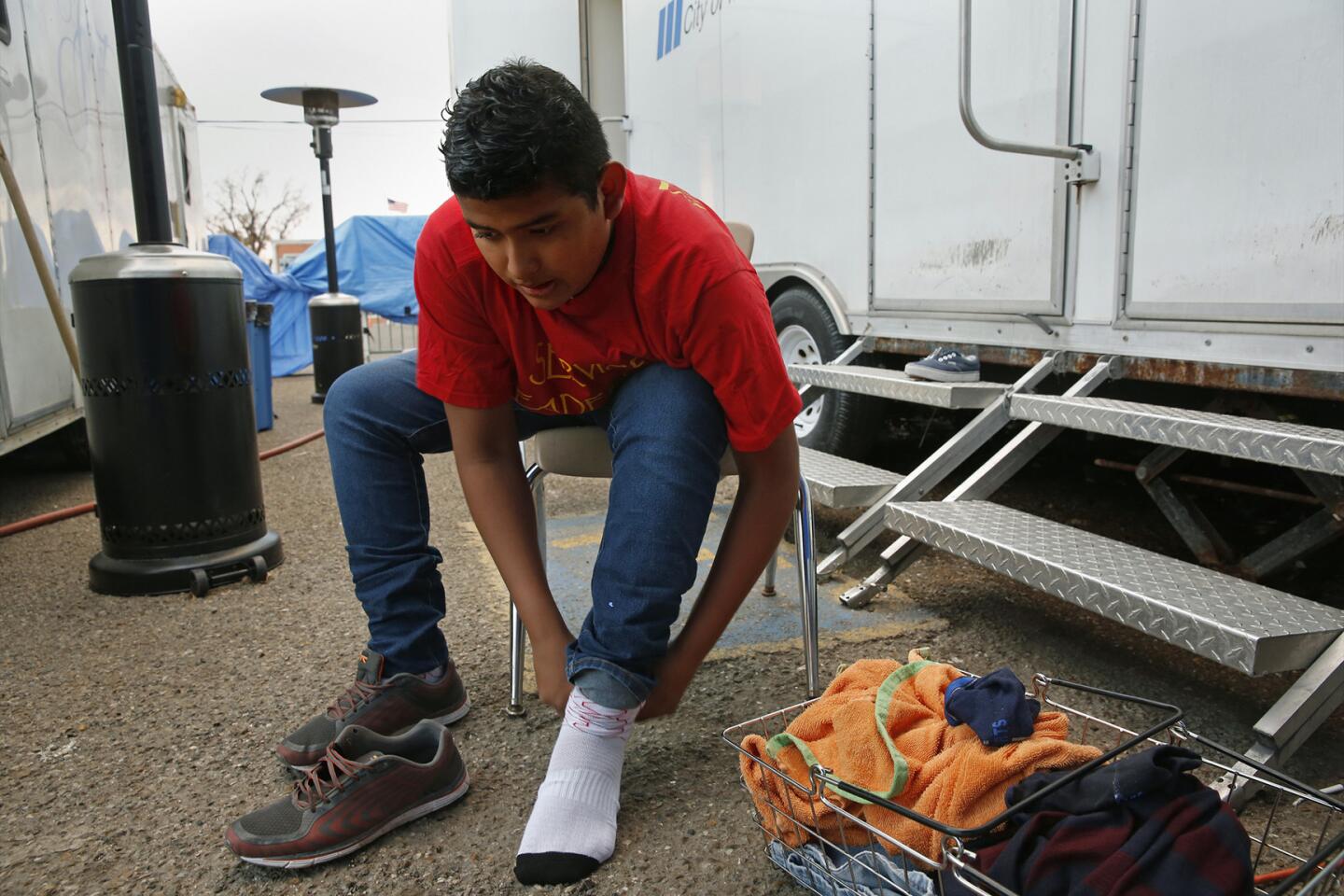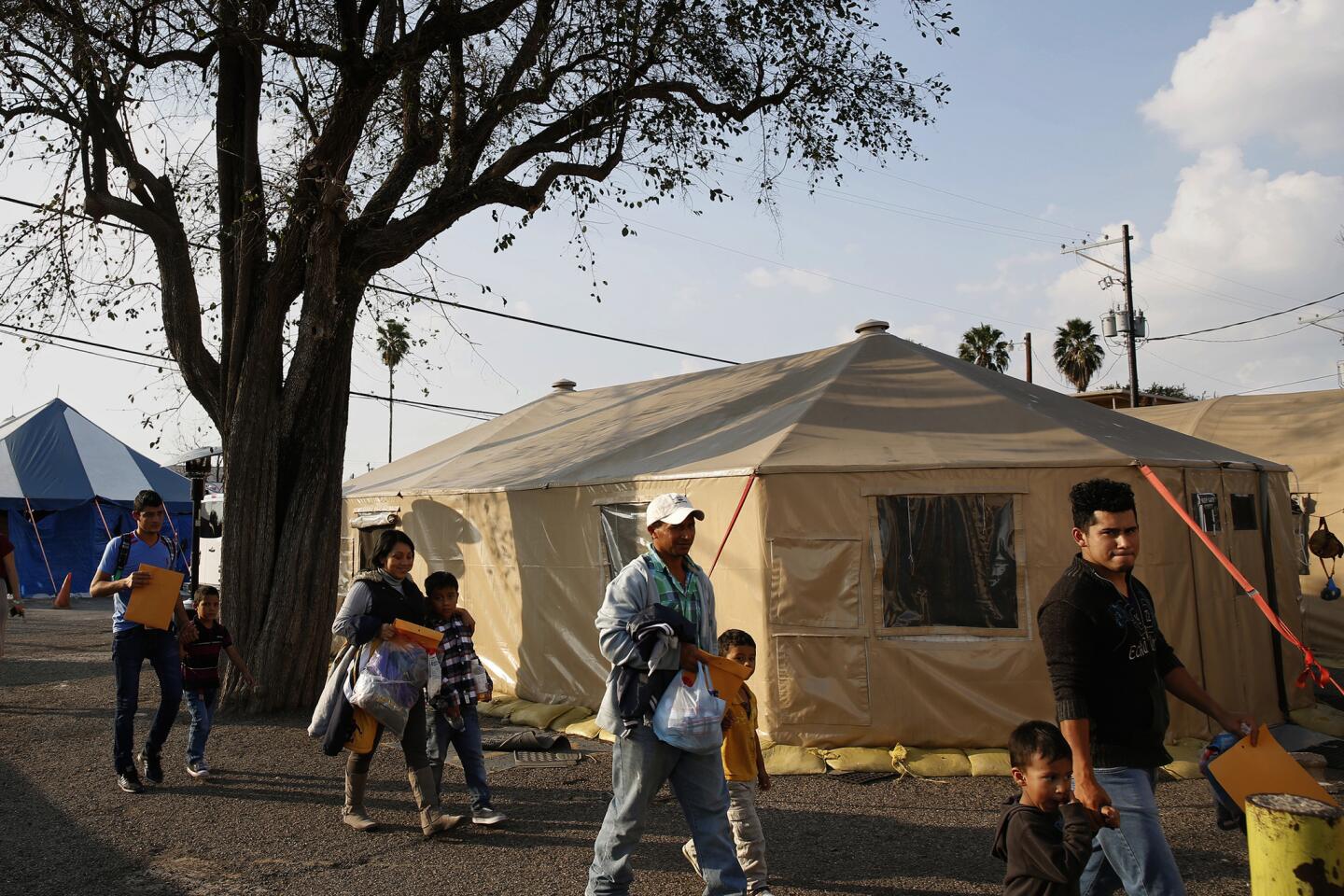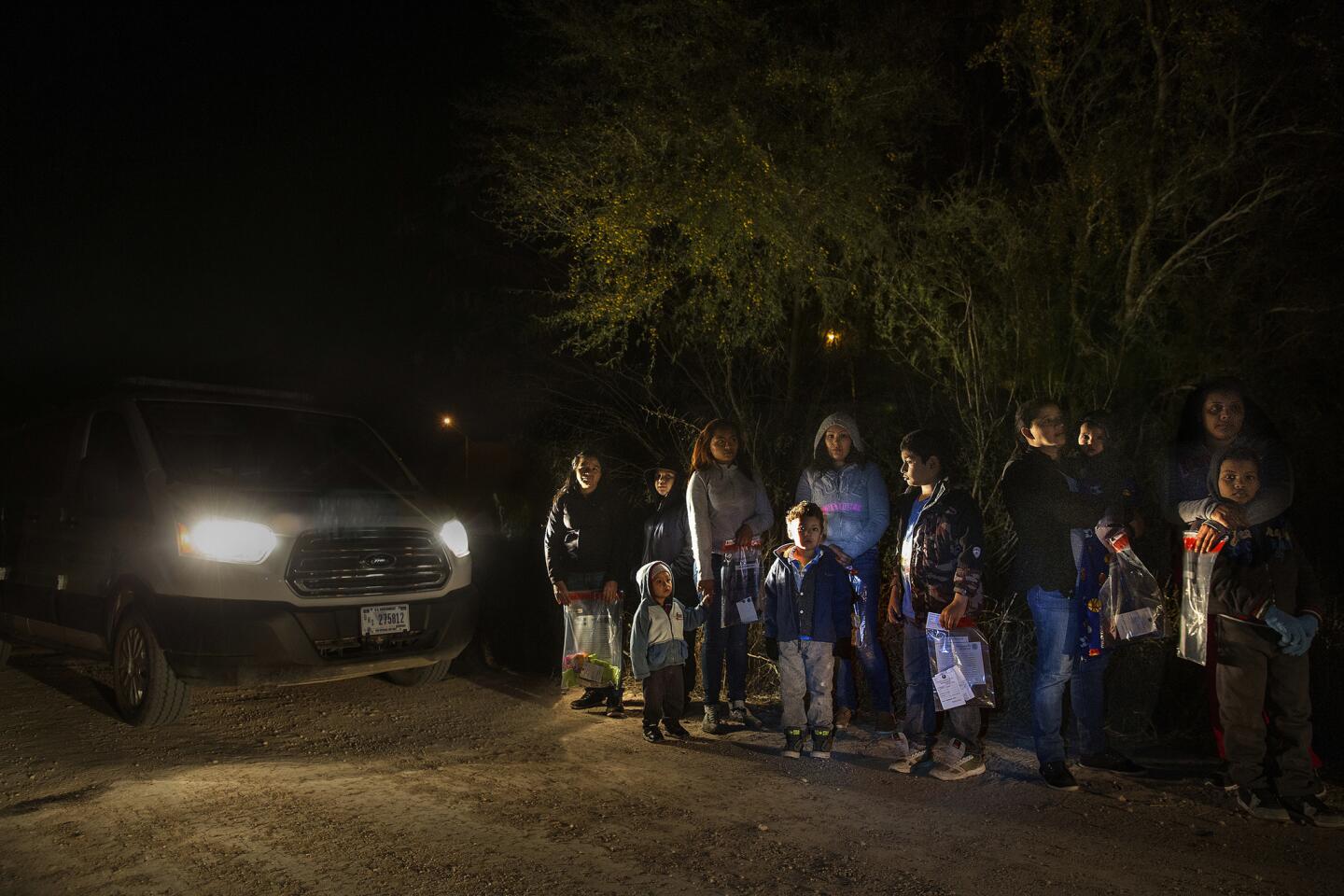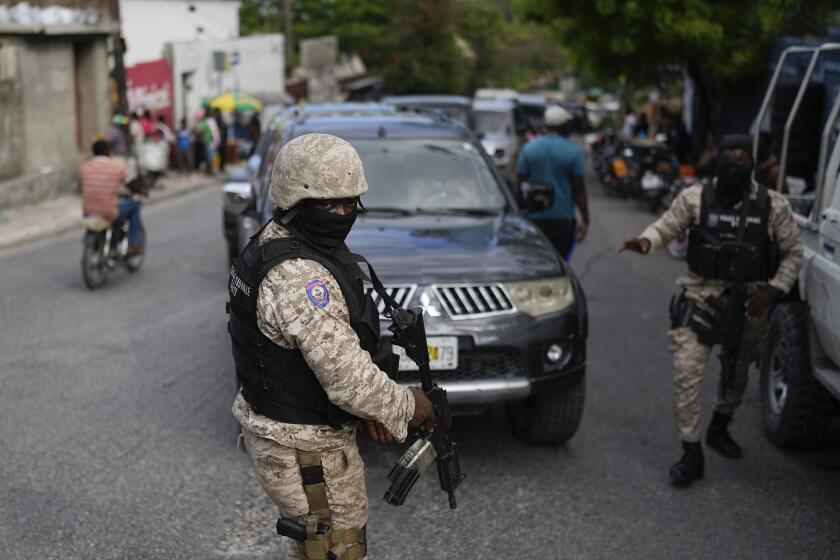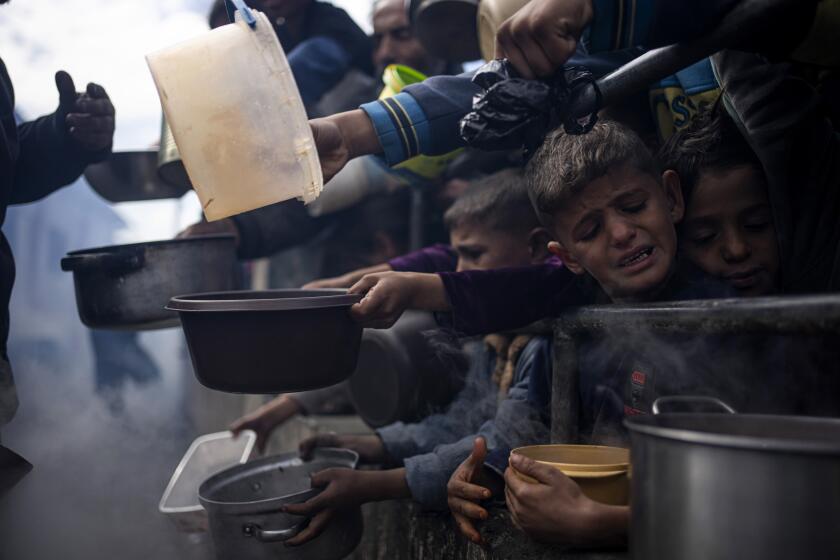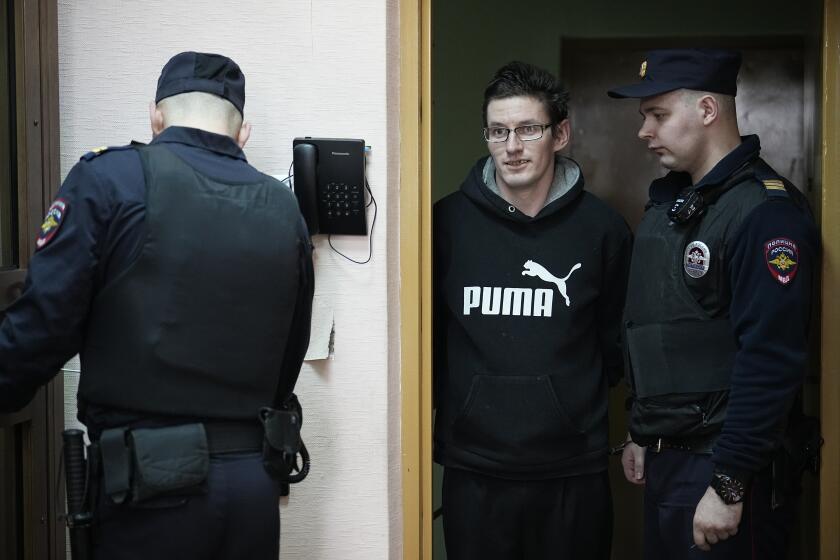Trump vowed to end ‘catch and release,’ but on the border, it’s business as usual
When President Trump signed his executive order on border security and immigration, Jesly Bardales, a 22-year-old mother from Honduras, had already trekked 1,000 miles toward the United States.
After making it through Guatemala and much of Mexico, the heavily pregnant waitress was not ready to turn around. She and her 2-year-old daughter, Veyla, had slept in dense forests, squeezed into dark trucks with strangers and paid smugglers thousands of dollars.
She pressed on, eventually crossing the Rio Grande River. After two days of processing by customs and immigration officials, she finally stood in a Greyhound station in the Texas border town of McAllen, cradling her swollen belly as she queued up for a bus ticket to join her sister in Atlanta.
“I’m worried they might not give me the opportunity to stay,” she admitted. “The new president, he wants to deport the ones already living here, so I don’t know what to expect.”
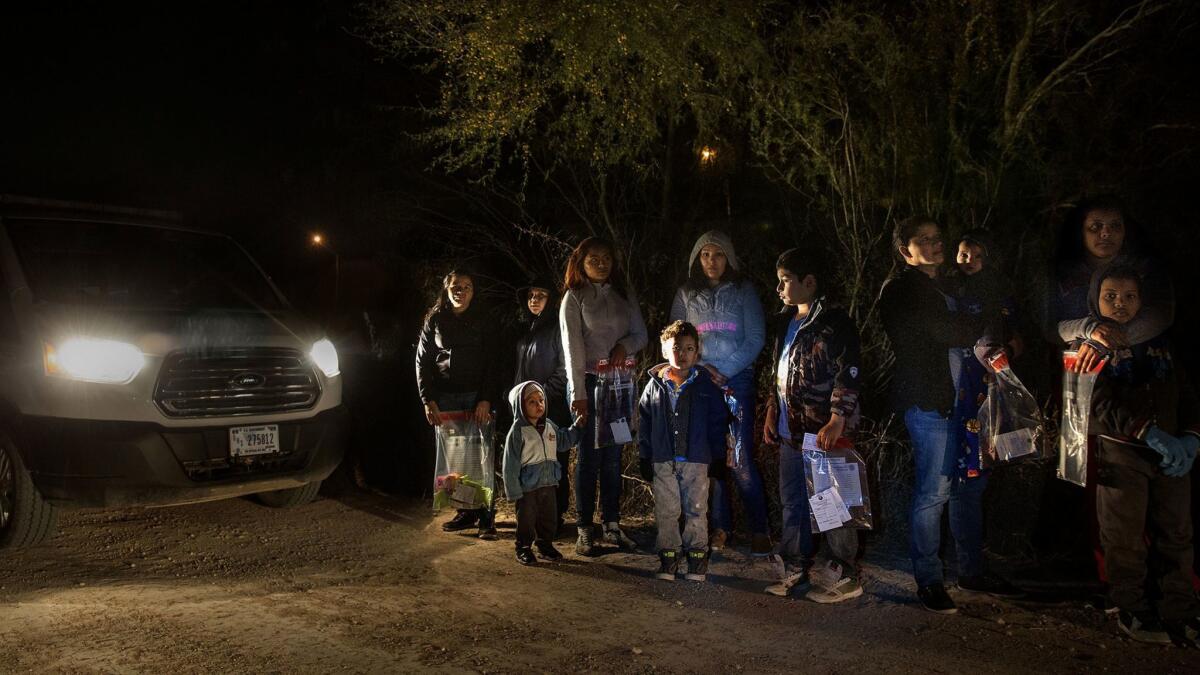
After crossing the Rio Grande River at night with the help of smugglers, group of mainly women and children from Central America are detained by U.S. Border Patrol agents before being taken into detention.
President Trump has vowed to overhaul the immigration system, but for now it’s almost business as usual on the border. A slow stream of Central American families, fleeing poverty and violence in Honduras, El Salvador and Guatemala, has continued to trickle into McAllen, one of the busiest ports of entry on the Southwest border.
Although Trump has ordered the Department of Homeland Security to end “catch and release,” the unofficial name for a policy in which U.S. immigration enforcement agencies allow migrants they deem low risk to remain at large pending a hearing, there are not enough detention centers to hold the thousands of families crossing over.
A few times a day, a white bus drops off a fresh batch of immigrant families in downtown McAllen. Mothers and fathers stumble out — many wearing thick, black electronic ankle monitors — cradling small children with disheveled hair and clutching legal notices to appear in court within days. Worn out, they line up to pick up tickets to join family in cities as far away as Tallahassee and Los Angeles.
Across the border, anxiety is rife as immigrants, attorneys and officials struggle to interpret the frenzy of announcements from Washington.

Sister Norma Pimentel, executive director of Catholic Charities of the Rio Grande Valley, runs a shelter for immigrants at Sacred Heart Church in McAllen, Texas.
“Lately, I feel like every day is a Jack in the box: Turn the handle and see what pops out,” said Jodi Goodwin, a longtime immigration attorney in Harlingen, a Texas border city about 30 miles from the Gulf of Mexico. “They’ve get instructions to detain everyone. Okay, how in the world are they supposed to do that? Everyone is scratching their heads.”
Trump’s executive order instructs the Department of Homeland Security to immediately “establish contracts to construct, operate, or control” immigrant detention facilities at or near the border, but many experts warn that ramping up the immigrant detention system will be costly and fraught with legal challenges.
Even before Trump took office, the numbers of immigrants in detention reached historic levels under the Obama administration. In November, then-Secretary of Homeland Security Jeh Johnson announced that 41,000 people were being held in Immigrations and Customs Enforcement detention. The number usually is 31,000 to 34,000.
In 2014, ICE built two facilities in Texas — the South Texas Family Residential Center in Dilley and the Karnes County Residential Center in Karnes City — to accommodate the surge of Central American women and children arriving on the U.S. border seeking asylum. Activists say they are already close to capacity.
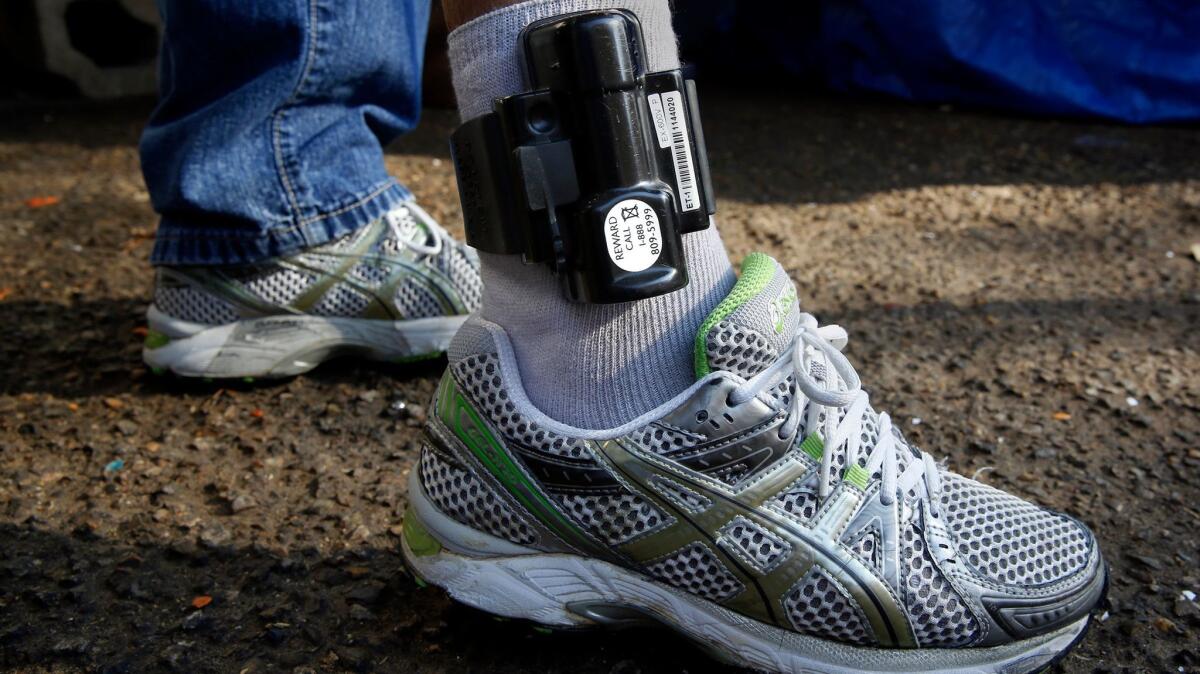
Mandating detention at the border could cost an additional $9 billion over the next decade, the Center for American Progress, a Washington-based think tank, has estimated.
“Trump’s executive order is more show, more salesmanship, than anything else,” said U.S. Rep. Henry Cuellar, a Democrat who represents the Laredo area of the Texas border and is on the Homeland Security Subcommittee. Trump, he said, would need congressional approval to fund detention centers. “If you look at the executive order, it all goes back to appropriations; it all goes back to Congress. We have a minimum of beds.”
Although Cuellar supports the idea of more detention centers across the border, he emphasized that they should be accompanied by more immigration judges. Right now, the nation’s 292 immigrant judges have a backlog of more than half a million pending cases.
Attorneys warn that speeding up the immigration process could exacerbate immigrants’ struggle to find legal representation and raise problems of due process. With many detention centers in remote areas, detainees already struggle to secure legal advice, a critical factor in having a successful asylum claim.
“If the asylum process moves more quickly, are they going to have enough time to find attorneys to represent them?” said Melissa Lopez, an immigration attorney in El Paso.
Chris Cabrera, vice president of the Rio Grande Valley’s chapter of the National Border Patrol Council, the union that represents agents, welcomed Trump’s plan to end “catch and release,” saying he hoped it would stem the flow of migrants. The week after Trump signed his executive order, Border Patrol agents in the Rio Grande Valley apprehended 300 to 400 migrants a day, he said, and many were released after processing by ICE officials.
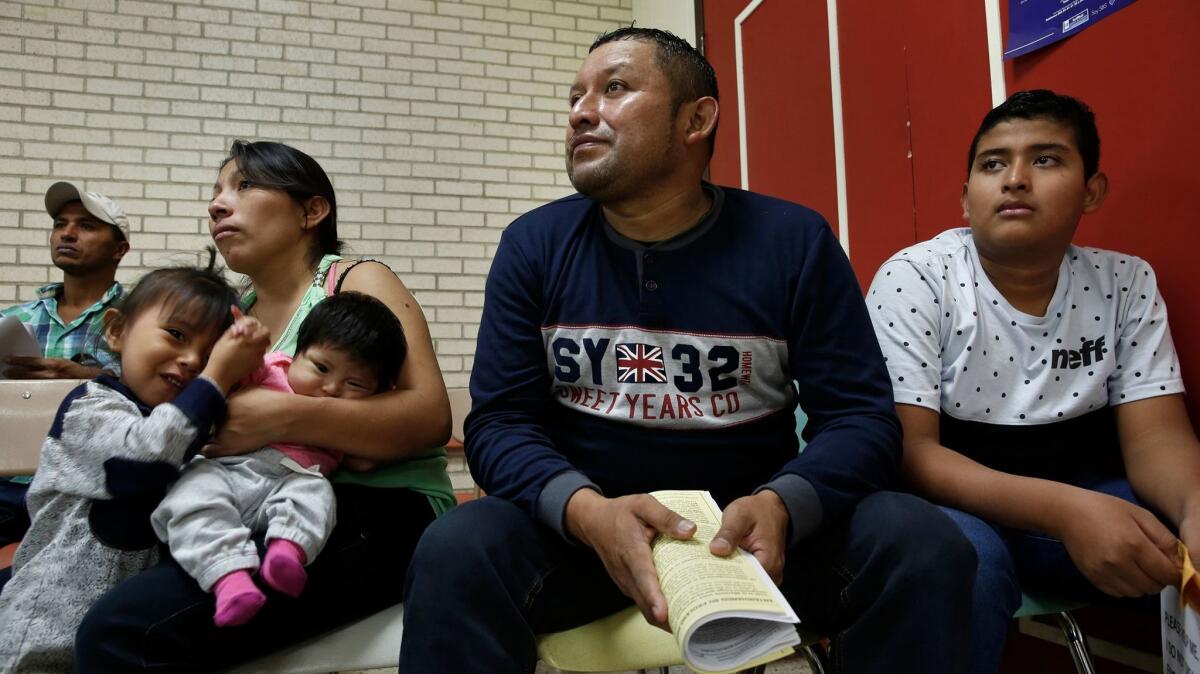
“Catch and release hasn’t ended yet, but we’ve heard a one-word answer: soon,” Cabrera said. “We don’t know how soon. There are logistics to settle.”
From his vantage point, the current system is broken: Migrants know they can claim asylum, be released and given notices to appear in immigration court for cases that often take years due to a backlog.
“These people are turning themselves in south of the wall because they know we’re going to release them,” he said. “They know there’s this loophole.”
Yet advocates for immigrants say that many who make the arduous journey to the United States are fleeing persecution and deserve to be treated humanely while they wait for their cases to be heard. Last year, a Homeland Security advisory committee urged the Obama administration to stop the widespread practice of family detention, reserving it only for rare cases when release might pose a danger or flight risk.
“Detention centers are not a place for families and children,” said Sister Norma Pimentel, executive director of Catholic Charities of the Rio Grande Valley, which runs a shelter for immigrants at McAllen’s Sacred Heart Church.
Rushing to bolster the massive immigration detention system that thrived under Obama’s administration is likely to exacerbate poor conditions at detention centers, said Carl Takei, a staff attorney at the ACLU’s National Prison Project who authored a 2016 report on detainee deaths, suicides, and substandard medical care at ICE detention facilities.
“The immigrant detention system already lacks rigorous oversight and transparency,” Takei said. “If the agency’s priority is to rapidly sign contracts to expand detention space, then it’s fair to predict the situation is going to get even worse.”
Supporters of more stringent border controls argue that detention centers do not necessarily have to be a long-term solution: News of a crackdown on illegal immigration would spread fast across Mexico and Central America, scaring off other undocumented immigrants from making the trek, they say.
“We’ve seen this happen before,” Cabrera said. “Once the word gets out that we’re detaining everyone and sending them home, it will stop.”
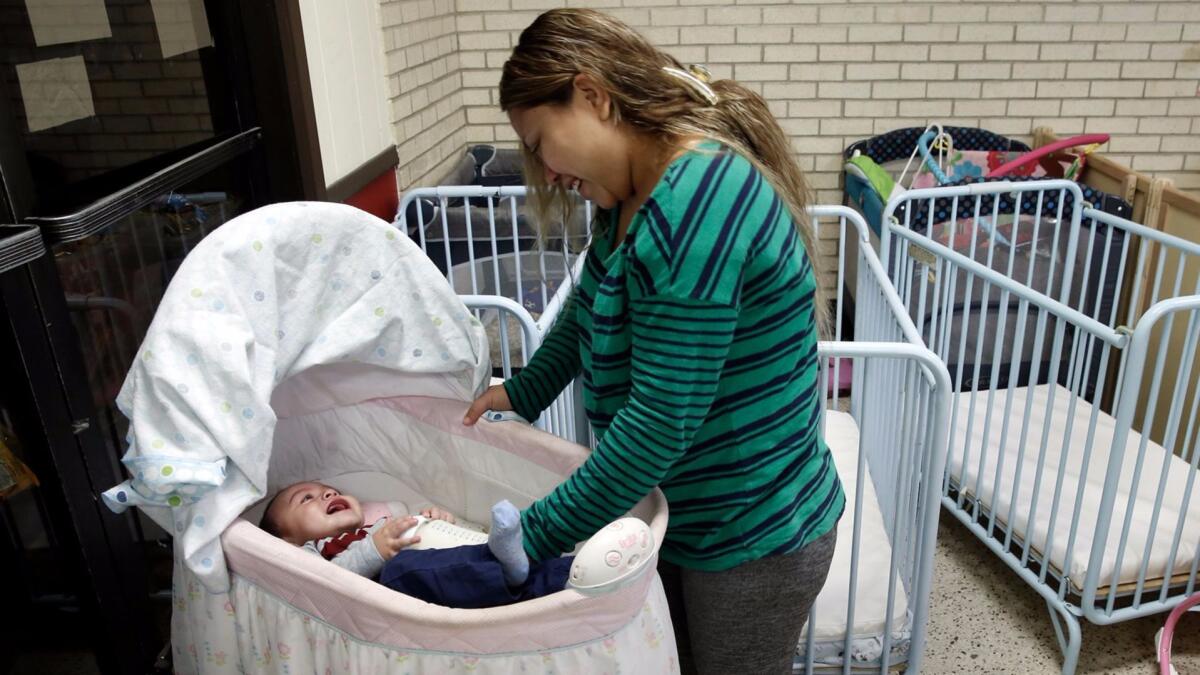
Advocates for asylum seekers, however, point out that building family detention centers in 2014 did not quell the flow of families seeking entry. “Detaining immigrants is not going to make them go away,” Lopez said.
As he waited for a bus to Los Angeles, Miguel Rodas, a 42-year-old policeman who fled his town in central El Salvador after gang members threatened to kill him, admitted he was plagued by doubts throughout his journey with his 13-year-old son, Samuel. Catching flickers of news of Trump’s presidency, he couldn’t help wondering if he was just squandering the $6,000 he had saved to pay smugglers.
“A lot of people from my country are scared,” he said. “They say it will be very difficult to get legal status.”
Rodas was relieved he had been released, even if he had a notice to appear in court in 11 days and an electronic monitor attached to his ankle. But he worried about his wife and two daughters, who he left in hiding in San Salvador.
“I want to be with them, but the road to America is very difficult,” he said. “I don’t want them to go through that. I want to find a way to bring them here legally.”
To read the article in Spanish, clic here
Jarvie is a special correspondent. Times staff writer Molly Hennessy-Fiske in Houston contributed to this report.
ALSO
For Iranian Americans, Trump has complicated an already tricky trip to motherland
More to Read
Start your day right
Sign up for Essential California for news, features and recommendations from the L.A. Times and beyond in your inbox six days a week.
You may occasionally receive promotional content from the Los Angeles Times.







